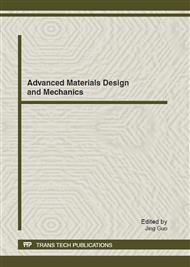p.693
p.697
p.703
p.707
p.712
p.718
p.723
p.729
p.733
Coordinate Transform Methods Used in Dynamic Simulation of Satellite Separation
Abstract:
Direction cosine matrix, Euler angles and quaternions are the common methods for translating vector equations into scalar equations. These methods used in separation simulation lack systematic discussion and comparison. This article is trying to present a proper coordinate transformation method for dynamic analysis of satellite separation. 321 and 123 rotations of Euler angles are proposed to construct the dynamic equations, which is different from simulation of missiles by the rotation of 321 and 231. Both Euler angles and quaternions are adopted to model the separation process of a small satellite that uses the helical compression springs mechanism. Feasibility and practicability of the approach are proved by comparing the simulation results, which are solved in MATLAB and ADAMS software platforms. It is concluded that the method of quaternions is more accurate and efficient in dynamic simulation of satellite separation.
Info:
Periodical:
Pages:
712-717
Citation:
Online since:
September 2012
Authors:
Price:
Сopyright:
© 2012 Trans Tech Publications Ltd. All Rights Reserved
Share:
Citation:


